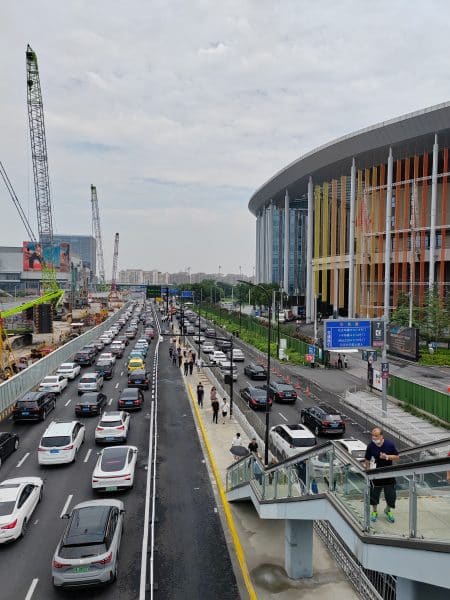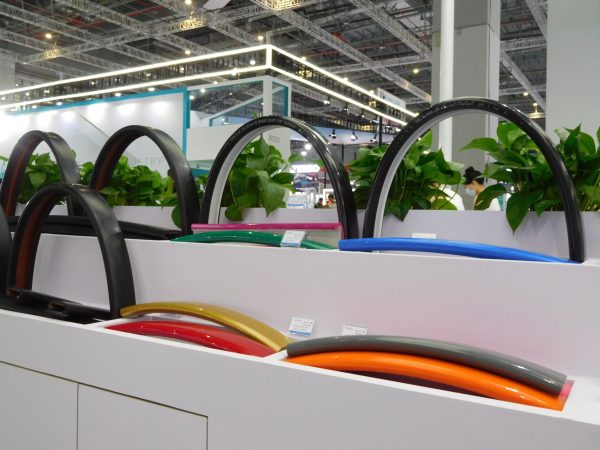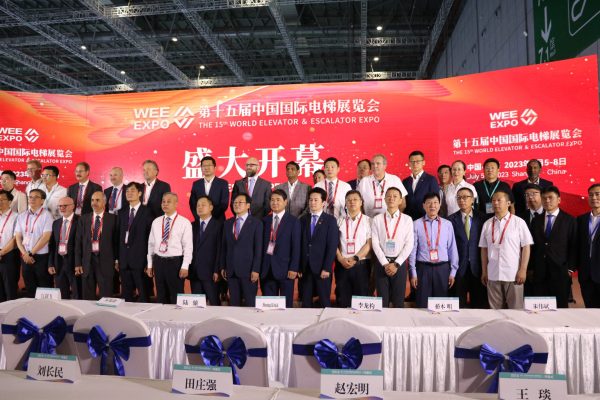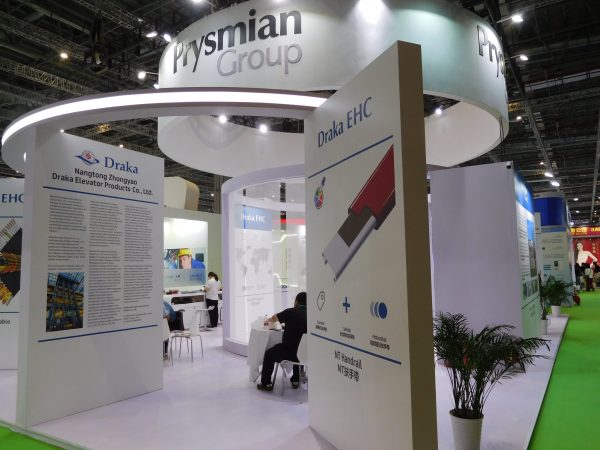Exposition returns following a three-year hiatus.
The 15th World Elevator & Escalator Exposition (WEEE), postponed from 2022, was held in Shanghai, China, on July 5-8. Just like the previous one, this event embraced the hottest days of Shanghai. Despite the scorching sun, the long, slow automobile lanes were full on Zhu-Guang Road leading to the National Convention & Exhibition Center’s (NECC) vehicle entrance. Nevertheless, the western pedestrian entrance to the venue welcomed hurrying exhibitors and eager visitors enthusiastic about face-to-face communication after the lingering pandemic inconvenience.
This summer event, according to the latest report, gathered roughly 1,000 domestic and global exhibitors showcasing their products, services and up-to-date project solutions. The exhibitors occupied the four upper floors of the total eight halls, with clear goals to expand business with potential customers, meet existing customers and promote new products. In addition to the opening ceremony were a number of forums and workshops, during which the latest information, developments and technical issues concerning the future of the elevator industry were addressed, exchanged and discussed. Topics included the orientation of next-generation elevator technology, elevator and escalator (E&E) safety issue solutions and magnetic levitation doors, to mention only a few.

Cars line Zhu-Guang Road outside the NECC.

Attendees arrive at the NECC via escalator.

The BTS Monarch team
Regarding the nation’s elevator output, 2021 saw China achieve an increase of 14% up to 1.21 million units, compared to 2020 figures. However, the industry experienced a decline of 9.1% in 2022, down to 1.10 million units against that of 2021, probably due to a shrink in construction business partly caused by the haunting COVID-19 pandemic. Fortunately, recent years saw a promising market potential in the growth of home (villa) lifts; an authorized official estimated a 60,000- to 100,000-unit demand in 2023 alone. In addition, adapting lifts to existing, aged residential buildings remains a lasting business for which elevator manufacturers and contractors can compete. Today, more than 10 million inspected E&Es are at work in and out of buildings across China, and the annual nationwide market holds well over 508 billion yuan (roughly US$71 billion) with both figures to grow at a promising rate.

BTS Monarch Sales Director Shelley Zhou (center)

Elevator air conditioner units

Colorful escalator handrails
One of the most remarkable advancements is the progress that the Internet of Things (IoT) has made with wide and practical application in the Chinese elevator industry based on varied methods for information collection and global-positioning technologies, as well as big data from the cloud backed up by extensive 5G systems. For example, in everyday remote monitoring for equipment failure and troubleshooting among hundreds of thousands of E&E in operation, a manufacturer or contractor can work efficiently and easily with IoT technology. To streamline the activities and developments in IoT for E&E nationwide, a series of national standards have been newly issued to take effect in the near future.

NECC western pedestrian entrance

A group photo is taken at the opening ceremony.
Mobile phones were used for easy visitor registration. Attendees could scan the public event code on the post board and input the required personal information to establish a personal code and, with that, get a pass badge printed out at the entrance. Both junior and senior members of the industry, namely, three generations of elevator men and women in all since the late 1980s, cherished this opportunity to meet with one another for friendly greetings and brief remarks or to sit down for a conversation over a cup of tea. Wu Shaojun, chief inspector at Aoda, a specialized step-chain manufacturer, talked to your author frankly about the quality and performance of his products and his competitors. Faces from African, American, Asian and European countries were seen talking behind exhibits or wandering along booth aisles. For a few potential purchasers who seemed to have language problems, mobile phones played an essential role in helping communication. They simply showed a picture of whatever they wanted to the booth keeper who could check on their request.


Sicher Elevator Co. Ltd. representatives greet visitors.

Attendees talk at tables in the Xinda area.
To make elevators more rider-friendly and intelligent, various models of human-elevator interface have emerged, for example, WeChat code scanning, voice communication, face recognition and hand gesture recognition. All is done by the touch of a screen and made possible by efficient, powerful cloud platforms and 5G communication. These solutions were showcased at many providers’ stands in the bustling halls. Some of the exhibitors seemed to be highly specialized, for example, those that make safeties, rope pulleys or cabin air-conditioning fans, even down to bolts and nuts. The tale behind the scenes lies in the fact that once all resources in a company are pulled together, focusing on one goal only, the goal is bound to be achieved as perfectly as possible. Probably greater perfectness lies in a stretch of land where hundreds of such specialized factories and companies work together, thus the competitive supply chains that generate efficiency and create wonders in the nation’s elevator industry.

SJEC Corp. representatives receive visitors at the company’s booth.

Bright lights at the Monteferro booth

Montanari’s large booth included a café.
Some exhibitors had a full house of visitors, as potential customers kept coming throughout the day. A typical example was seen at BST Monarch by Inovance’s well-lit space where every table in the booth had people seated talking business while more visitors stood, looking at the exhibits closely. Shelley Zhou, sales director of BST products, told your author that the company has always given top priority to researching state-of-the-art technologies, and many visitors were interested in these highly intelligent products. Others were surprised to experience products featuring AI applications for passenger safety, intelligent destination dispatch and visual hoistway inspection via cloud data and smart door drives, etc.

The KONE Corp. booth included large cutouts of people in motion.

Prysmian Group booth
Zhou said:
“Human ingenuity inspires us to civilization and the glory of industry. Today, digital transformation is the key to industrial growth, from smart buildings all the way to intelligent cities. For elevator manufacturers and contractors, digital transformation boosts working efficiency, enabling us to handle a growing number of installations with limited human resources while reducing costs. It also helps make elevators safer, more reliable and more comfortable.”
“Pictures speak louder than words,” William C. Sturgeon, founder of ELEVATOR WORLD, told your author during his China tour in the mid-1980s. With his words in mind, I let the lens scan as many booths as possible, regardless of the midsummer heat outside the glass screen of the familiar halls. Memory says to me that three full years have gone by since August 2020 when WEEE was last held — the longest time interval recorded in the event’s history. The elusive feeling makes every photo here memorable and story-telling. There did not seem to be as many real installations and giant components on display as there were at shows one or two decades ago, but there definitely seemed to be more dynamics and hope relayed in the atmosphere.

The Canny Elevator booth

Some exhibitors displayed specialized components.

Elevator interior features the art of Gustav Klimt.

Glass elevator installation

KLEEMANN was among the companies present.

Montanari Drive Technology

Huai’an Jiangong Nylon Products Co. Ltd.
Get more of Elevator World. Sign up for our free e-newsletter.








